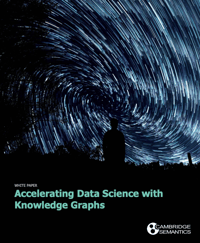This blog was originally posted on Medium.
Perhaps the only certainty in today’s difficult business climate in which organizations struggle to accomplish more with fewer resources is that data-driven automation, in the form of machine learning (ML) and artificial intelligence (AI), has become an enabler for enterprise survival.
Those who invest in and develop advanced ML and AI capabilities use their data to work more productively and efficiently than their competitors by lowering costs and increasing yields. This fact is buttressed by Gartner’s findings that two-thirds of organizations have increased or maintained their AI expenditures since the Covid-19 outbreak, whereas nearly half of them are increasing investments in related applications, such as the Internet of Things. Gartner also predicts that three-quarters of organizations will be operationalizing AI by 2024 and lists hyperautomation as a preeminent digital workforce trend.
With the data landscape inexorably shifting toward AI-infused automation, organizations can’t afford to fall behind competitors as a result of slow or inefficient efforts to master or operationalize data science. The data science dilemma is twofold. It still takes far too long to assemble, clean, and extract features from data. Second, DevOps teams frequently struggle in deployment, grappling with how to make an individual data scientist’s machine-learning model operational.
Semantic knowledge graph platforms such as Anzo—Cambridge Semantics’s enterprise scale knowledge graph solution—help organizations overcome these challenges by accelerating core data-science processes such as data preparation and feature engineering. They also enable organizations to expand their use of data science by providing a high-performance, scalable data management and analytics platform that integrates with popular machine learning and AI tools. Some semantic graph platforms are uniquely well suited for data science projects because they make it extremely easy for data analysts to blend in additional data sets, potential sources of signal, into harmonized data collections. They also expose connections between data points and in many cases enable support for generating supplemental connections through inferences and algorithmically produced data linkages as well as providing a multitude of functions to help expose and clarify the signals needed for machine learning.
A scalable knowledge graph platform with these capabilities makes data science initiatives faster, simpler to operationalize, and more effective. Its support for fundamental data science processes, such as data onboarding, integrating, blending, and engineering data for machine-learning features, combined with its ability to integrate smoothly with the most popular data science tools available, produces two needed results.
 It not only minimizes the data wrangling and preparation burden associated with provisioning data for data science projects (reducing the overall time required to build new analytic ready data sets), but it also simultaneously delivers more tightly integrated, connected, multidimensional data, which often has greater potential to reveal insights through the application of machine learning techniques.
It not only minimizes the data wrangling and preparation burden associated with provisioning data for data science projects (reducing the overall time required to build new analytic ready data sets), but it also simultaneously delivers more tightly integrated, connected, multidimensional data, which often has greater potential to reveal insights through the application of machine learning techniques.
If you’d like to continue down the path to where data science and knowledge graphs meet, you might enjoy this white paper I just finished putting together. Inside, I go into detail regarding preparation, operationalization, and the functionality necessary to be successful. Download the white paper for a fuller understanding as to why a scalable knowledge graph platform could be the right choice for your data science initiatives.
